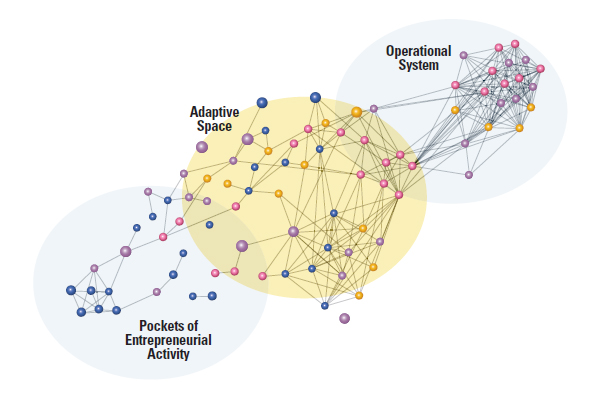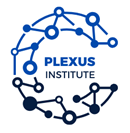How does your organization address the threat of “disruption”? This question has become a mainstay of most strategic conversations, in large part because the conditions for entire industries, social, economic and certainly business systems are being broken apart, thrown into disorder and prevented from functioning as they always have.
In Michael Arena’s new book Adaptive Space: How GM and Other Companies are Positively Disrupting Themselves and Transforming into Agile Organizations the former Plexus Board Chair shares insights and practical applications of complexity thinking in today’s most competitive business systems. The best way for any company to unleash creative potential from within, is to transform themselves into responsive, agile organizations suited for the age of disruption by enabling individual employees to connect and create across networks.
Adaptive space can be thought of as the relational and emotional freedom for people to freely explore, exchange, and debate ideas. It operates as a sort of free-trade zone for ideas, by tapping into the power of network dynamics, adaptive space creates connections that serve to discover, develop, and diffuse new ideas into and across an organization.
“One of the biggest challenges facing organizations today is the need to be agile. We live in the era of disruption, where the lack of agility is the kiss of death. John Chambers, Executive Chairman of Cisco, said, “If you don’t transform…if you don’t reinvent yourself, change your organization structure; if you don’t talk about speed of innovation—you’re going to get disrupted. And it’ll be a brutal disruption, where the majority of companies will not exist in a meaningful way 10 to 15 years from now.” A study from Washington University projects that an estimated 40 percent of today’s S&P 500 companies will no longer exist a decade from now.
 This reality leaves organizations with a critical choice: disrupt or be disrupted. They need to adapt, in real time, in response to the changing demands of their environments. In the era of disruption, organizations need to be more liquid than static. This is where adaptive space comes into play. Adaptive space can be thought of as the relational and emotional freedom for people to freely explore, exchange, and debate ideas. It operates as a sort of free-trade zone for ideas, by tapping into the power of network dynamics, adaptive space creates connections that serve to discover, develop, and diffuse new ideas into and across an organization.
This reality leaves organizations with a critical choice: disrupt or be disrupted. They need to adapt, in real time, in response to the changing demands of their environments. In the era of disruption, organizations need to be more liquid than static. This is where adaptive space comes into play. Adaptive space can be thought of as the relational and emotional freedom for people to freely explore, exchange, and debate ideas. It operates as a sort of free-trade zone for ideas, by tapping into the power of network dynamics, adaptive space creates connections that serve to discover, develop, and diffuse new ideas into and across an organization.
For organizations to be agile, they need to openly scan across and beyond the organization for the next big thing. Then they need to think about how to bring an idea into the world in a more tangible manner. Finally, they need to scale these concepts throughout the organization to enable a new normal by positively disrupting itself. “ Michael Arena
The book also highlights four key network roles -brokers, connectors, energizers and challengers – that all organizations need in order to enable “Adaptive Space.” These roles help to facilitate the movement of ideas and information across the firm, and therefore, enable the organization to positively disrupt itself. The Adaptive Space builds capacity for working in complex systems where a different set of business principles are required due to the dependencies, relationships, and interactions between individuals, teams, functions, and its environment.
By setting the conditions for employee driven generative engagements, the organization recognizes the important differences and distinct properties that arise from these relationships, such as nonlinearity, emergence, spontaneous order, adaptation, and feedback loops, among others.
Michael J. Arena, Ph.D. is a leading expert in organizational network analysis and his work has been cited in the Wall Street Journal, Chief Executive Magazine, Harvard Business Review, Business Insider and Sloan Management Review. Arena is also the Chief Talent Officer for GM and has played a critical role in the company’s transformation. He launched GM2020, a grass roots initiative designed to enable employees to positively disrupt the way they work, which was highlighted in Fast Company. Arena teaches in Penn’s Masters in Organizational Dynamics program and acts as a design thinking coach within the Stanford dSchool. He also spent two years as a visiting scientist within MIT’s Media Lab and served as a Senior Vice President of Leadership Development at Bank of America.
Watch a recording of Michael’s Pop-Up Conversation, July 18, 2018.
